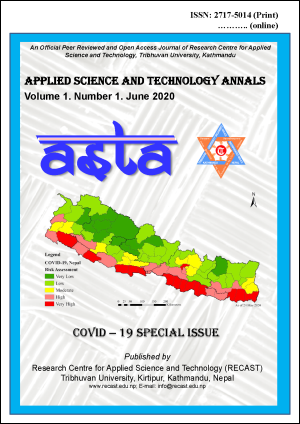How should Nepal apply lock-down exit strategy against rising COVID-19 burden in Nepal?
DOI:
https://doi.org/10.3126/asta.v1i1.30274Keywords:
COVID-19, exit strategy, lockdown, new normal, post lifting planAbstract
COVID-19 epidemic in Nepal is escalating with new cases/admissions at hospitals in recent weeks. The rise in cases is contributed by importation from India and has also led to an increase in the number of local/community transmission. While long-term lockdown can have devastating consequences in population, it is high time to consider the possibilities of exit strategies. The main objective of this piece is to explore the literature to lay out the possible measures for exit from the lockdown in Nepal. We used a descriptive review approach to compare and analyze the published academic and non-academic articles related to COVID-19 and lockdown until date. Post lifting plan should be in place as a roadmap to recovery. An exit strategy can be enacted effectively only when the community complies with new normal adjustments aided with effective public health measures and restrictions. Phase-wise measures should be employed while sudden loosening of restriction might result in detrimental effects.
Downloads
Downloads
Published
How to Cite
Issue
Section
License
© Research Centre for Applied Science and Technology (RECAST)

